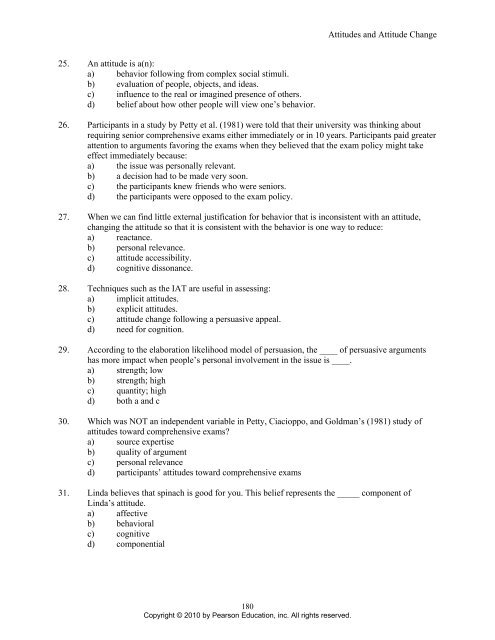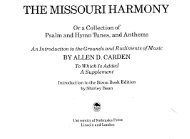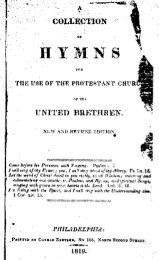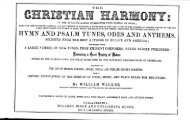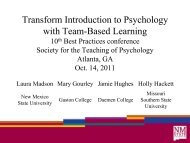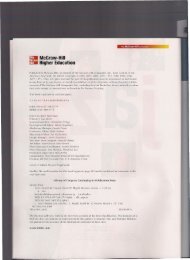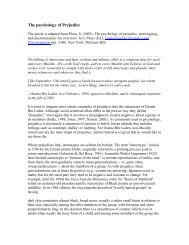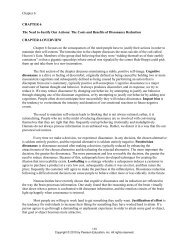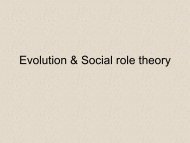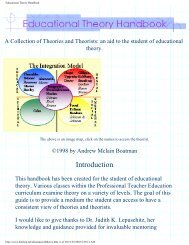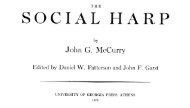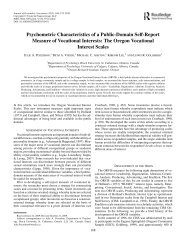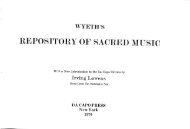Attitudes and Attitude Change CHAPTER 7 Attitudes and Attitude ...
Attitudes and Attitude Change CHAPTER 7 Attitudes and Attitude ...
Attitudes and Attitude Change CHAPTER 7 Attitudes and Attitude ...
You also want an ePaper? Increase the reach of your titles
YUMPU automatically turns print PDFs into web optimized ePapers that Google loves.
25. An attitude is a(n):<br />
a) behavior following from complex social stimuli.<br />
b) evaluation of people, objects, <strong>and</strong> ideas.<br />
c) influence to the real or imagined presence of others.<br />
d) belief about how other people will view one’s behavior.<br />
180<br />
Copyright © 2010 by Pearson Education, inc. All rights reserved.<br />
<strong><strong>Attitude</strong>s</strong> <strong>and</strong> <strong>Attitude</strong> <strong>Change</strong><br />
26. Participants in a study by Petty et al. (1981) were told that their university was thinking about<br />
requiring senior comprehensive exams either immediately or in 10 years. Participants paid greater<br />
attention to arguments favoring the exams when they believed that the exam policy might take<br />
effect immediately because:<br />
a) the issue was personally relevant.<br />
b) a decision had to be made very soon.<br />
c) the participants knew friends who were seniors.<br />
d) the participants were opposed to the exam policy.<br />
27. When we can find little external justification for behavior that is inconsistent with an attitude,<br />
changing the attitude so that it is consistent with the behavior is one way to reduce:<br />
a) reactance.<br />
b) personal relevance.<br />
c) attitude accessibility.<br />
d) cognitive dissonance.<br />
28. Techniques such as the IAT are useful in assessing:<br />
a) implicit attitudes.<br />
b) explicit attitudes.<br />
c) attitude change following a persuasive appeal.<br />
d) need for cognition.<br />
29. According to the elaboration likelihood model of persuasion, the ____ of persuasive arguments<br />
has more impact when people’s personal involvement in the issue is ____.<br />
a) strength; low<br />
b) strength; high<br />
c) quantity; high<br />
d) both a <strong>and</strong> c<br />
30. Which was NOT an independent variable in Petty, Ciacioppo, <strong>and</strong> Goldman’s (1981) study of<br />
attitudes toward comprehensive exams?<br />
a) source expertise<br />
b) quality of argument<br />
c) personal relevance<br />
d) participants’ attitudes toward comprehensive exams<br />
31. Linda believes that spinach is good for you. This belief represents the _____ component of<br />
Linda’s attitude.<br />
a) affective<br />
b) behavioral<br />
c) cognitive<br />
d) componential


